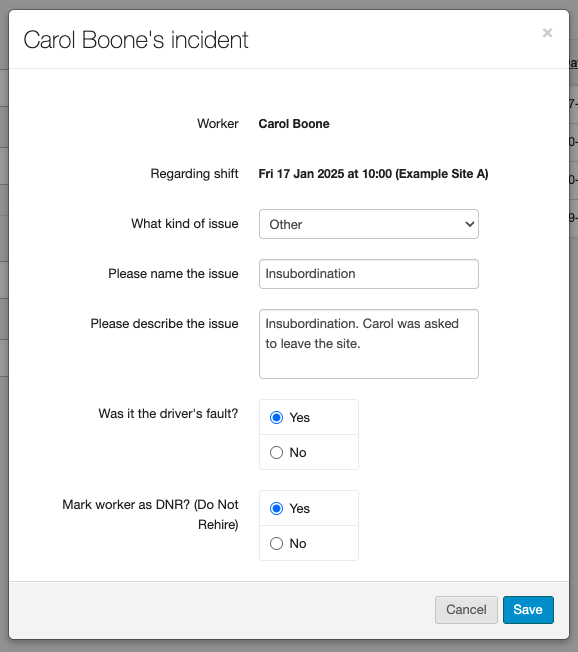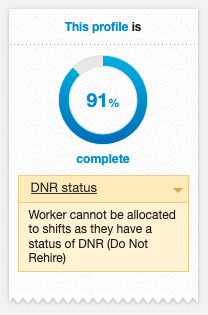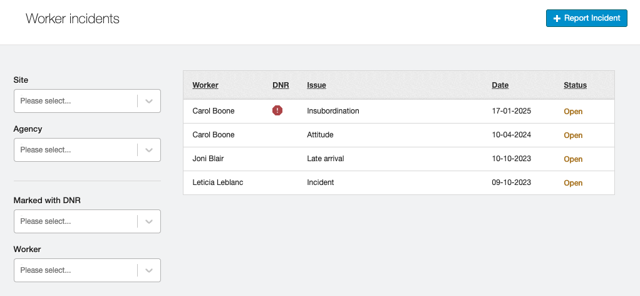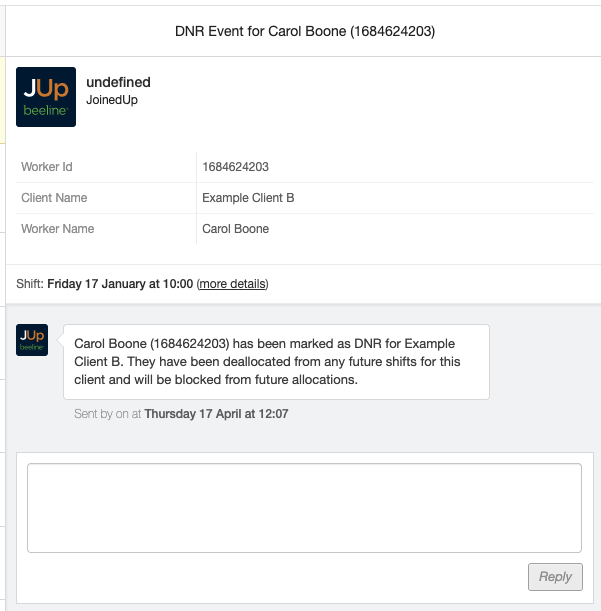Do Not Rehire
Overview
The Do Not Rehire (DNR) feature allows clients to flag workers who should not be assigned to future shifts due to performance issues, misconduct, or other critical concerns. Once marked as DNR, the worker is automatically removed from any upcoming shifts with that client and is blocked from being rebooked.
What is Do Not Rehire (DNR)?
Do Not Rehire (DNR) is a special worker status used by clients to prevent individuals from being scheduled for future shifts due to serious incidents such as:
-
Repeated no-shows
-
Low productivity
-
Gross misconduct
-
Behavioral concerns
Currently, DNR is applied at the client level, meaning the worker cannot be booked for any shifts with that client across all sites and jobs.
When to use DNR
Apply a DNR when a worker’s behavior or performance poses a risk or is no longer acceptable for your workforce.
| Once a worker is marked as DNR in JoinedUp, the system will automatically remove them from upcoming shifts and prevent any future assignments. The DNR status should only be added in JoinedUp after the decision has been made in line with the client’s requirements. |
How to Mark a Worker as DNR
Only clients can directly create and edit DNR statuses. Suppliers can submit worker incidents without adding or removing the DNR status.

For Client Users
-
Navigate to the Incident Reporting section.
-
Choose the Worker and the relevant Shift.
-
Complete the incident form.
-
Toggle “Mark as Do Not Rehire” to Yes.
-
Save the incident report.
What Happens After DNR is Logged
Several processes are initiated immediately once a DNR flag is set for a worker.
1. DNR Visibility: Incidents, Worker Tables, and Worker Profiles
The following tables now have a DNR column and filter, to improve usability:
-
Worker Incidents Table (visible to both clients and suppliers)
-
Managed Workers table (visible to suppliers)
-
Recently Used Workers table (visible to clients)
The worker’s profile will display a Do Not Rehire tag for the specified client.


| Planned Enhancement: Pre-loading DNR Validations (On-Site Allocation Screen) All validations for worker allocations are currently run after the allocation is attempted. While effective, this results in failed allocations that need to be actioned again. To improve the usability, workers with a DNR status will be highlighted on the Shift allocation (On-site) screen, discouraging users from attempting allocation. |
2. Notifications
Both the client and the supplier receive automated notifications.
Notifications are sent automatically when:
-
A worker is marked as Do Not Rehire (example shown on the right)
-
A DNR’d worker is deallocated from upcoming shifts

| Workers are also notified of deallocation (as normal), but the reason for deallocation is not shared. |
3. Removal from upcoming shifts
The system automatically removes the worker from any upcoming shifts with that client. The normal deallocation notifications are sent to inform the client, supplier, and worker that the worker was removed from the booking.
4. Block from scheduling
The worker is blocked from being scheduled for any new shifts with that client.
If a supplier attempts to allocate a DNR’d worker to the same client, allocation will fail. An error message is displayed, and the shift remains open for booking.

If a supplier attempts to allocate the same worker to a different client, the allocation will succeed. DNR status is client-specific and does not affect other clients in the platform.
| All linked profiles for a worker are also deallocated and blocked from future bookings when DNR is raised. |
5. Block Clock-In and Clock-Out Actions
Workers with a DNR status will not have any future shifts with the client after DNR is raised, but there is a possibility that the worker may show up at a client site anyway. If there is an attempted clock-in or clock-out action initiated by the worker, we will block the action.
As an extra level of security, a new notification to be sent if a DNR’d worker attempts to clock in or clock out, informing clients and their agency if a DNR’d worker has arrived on site.